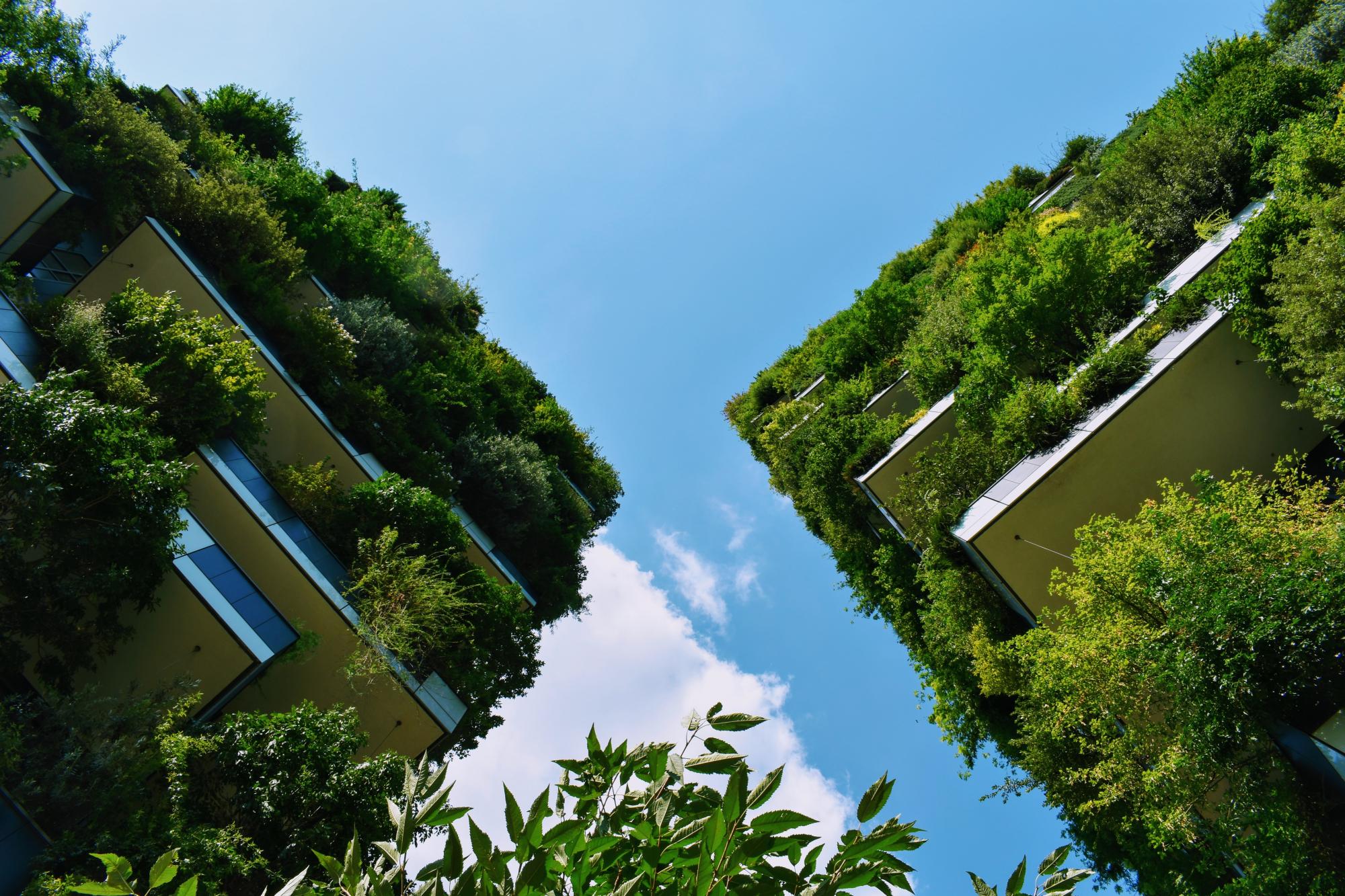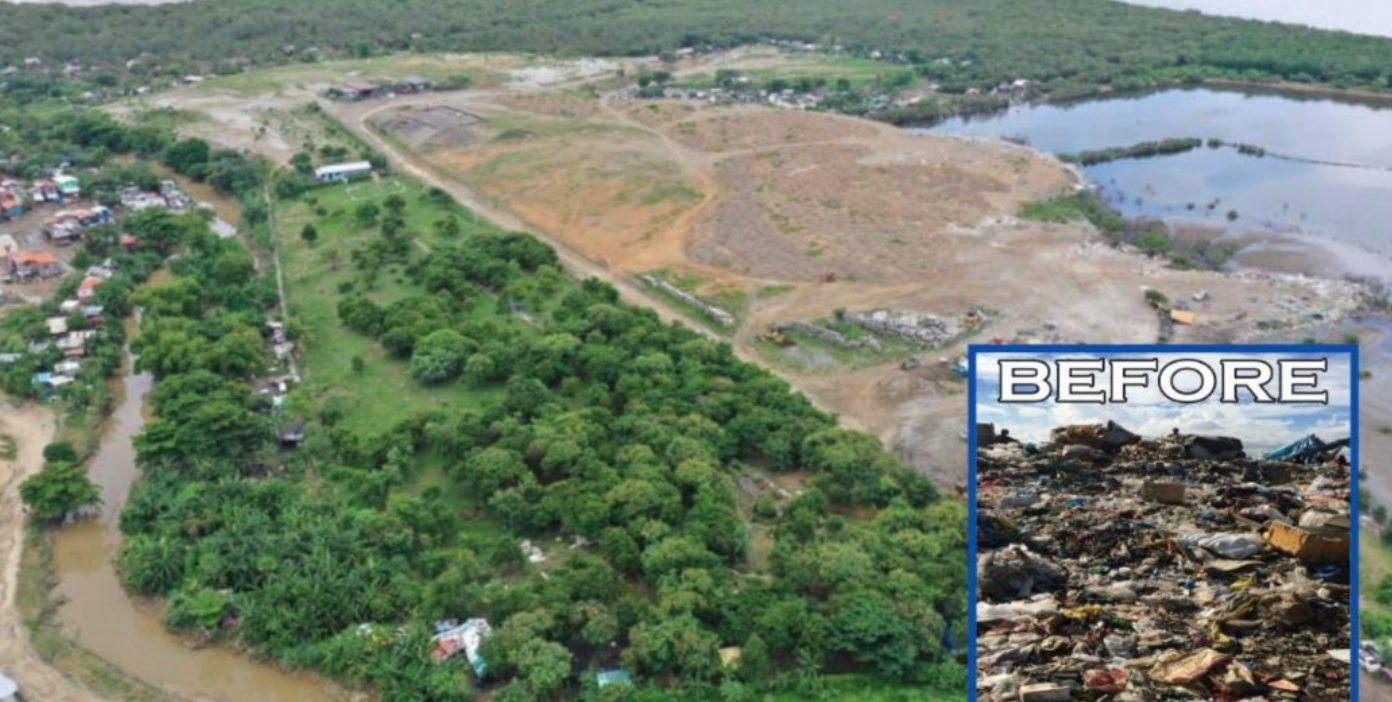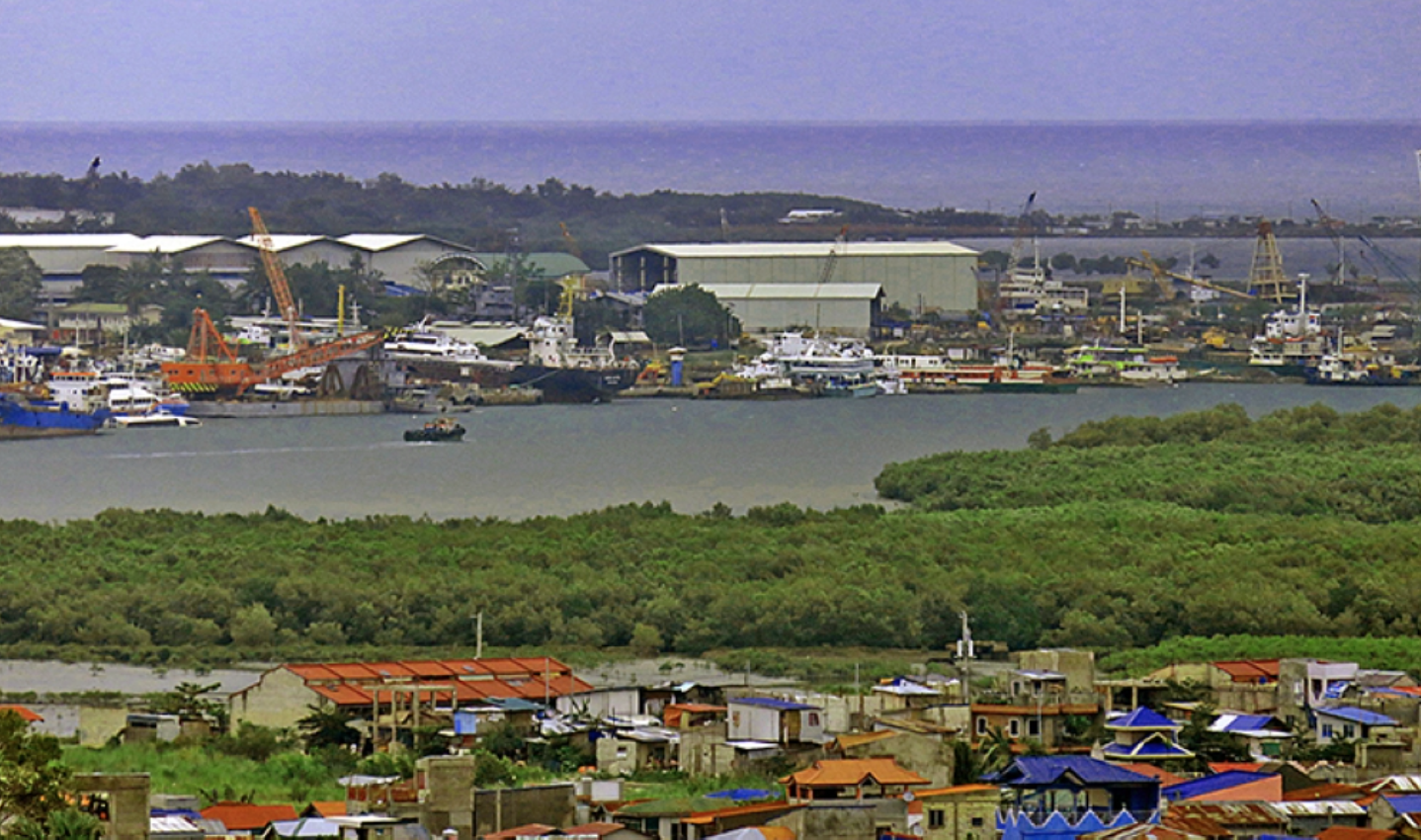Touted as a long-term solution to flooding of Mandaue City, establishment of a mangrove eco-park has begun, having received funding from the Department of Budget and Management (DBM) (Ref. 1). Through establishment of mangroves, the eco-park will "perform a significant role in shoreline protection, acting as a buffer against strong winds and waves", which is considered particularly important in light of the anticipated effects of climate change (Ref. 6). A total 17-hectare plot is to be rehabilitated, as identified in the Mandaue City Government's Comprehensive Land Use Plan (Ref. 3). At present, it is unclear whether nature-based solutions (including mangrove restoration) are to be implemented across the entire 17ha of the site, but initial efforts have been focused on the restoration of a 5-ha section of mangrove forest (Ref. 2). Due to the lack of data on how exactly the remainder of the 17-ha area will be restored, the total NBS area for this project has only been recorded as 5-ha (5000m2) within this case study, rather than the entire 17,000m2 which is encompassed within the site. The site is situated at the outfall of the Butuanon River which frequently overtops as a result of heavy rain and has been considered "biologically dead" since 1992 (Ref. 7). The site itself comprises a former dumpsite which had been "left derelict and filled with piles of trash", hence in addition to reducing flood risk, its rehabilitation will serve as green space in which "the residents of Mandaue City [can] gather and enjoy a breath of fresh air" (Ref. 2). The eco-park is considered to bring the added benefit of filtering water as it enters the Mactan Channel, in addition to reducing greenhouse gas emissions through carbon dioxide absorption (Refs. 1 & 6).
Overview
Nature-based solution
- Blue infrastructure
- Coastlines
- Coastal wetland, mangroves and salt marshes
- Community gardens and allotments
- Other
- Grey infrastructure featuring greens
- Other
- Parks and urban forests
- Large urban parks or forests
Key challenges
- Climate action for adaptation, resilience and mitigation (SDG 13)
- Climate change adaptation
- Climate change mitigation
- Coastal resilience and marine protection (SDG 14)
- Coastal protection / hazard mitigation
- Marine and coastal biodiversity protection
- Environmental quality
- Waste management
- Green space, habitats and biodiversity (SDG 15)
- Habitat and biodiversity restoration
- Green space creation and/or management
- Regeneration, land-use and urban development
- Promote natural styles of landscape design for urban development
- Water management (SDG 6)
- Flood protection
- Stormwater and rainfall management and storage
- Improvements to water quality
- Health and well-being (SDG 3)
- Creation of opportunities for recreation
- Social justice, cohesion and equity (SDG 10)
- Environmental education
Focus
Project objectives
Implementation activities
Climate-focused activities
Climate change adaptation:
- Protect coastal and freshwater ecosystems to prevent coastal erosion and pollution
- Restore wetlands and/or coastal ecosystems to dissipate the effects of flooding and/or storms
Climate change mitigation:
- Increase green urban nature for carbon storage (wetlands, tree cover)
- Raise public awareness of behaviours, lifestyle and cultural changes with mitigation potential
Biodiversity conservation or restoration-focused activities
Biodiversity restoration:
- Rehabilitate and restore damaged or destroyed ecosystems
- Public engagement
Main beneficiaries
- Citizens or community groups
- Other
Governance
Management set-up
- Government-led
Type of initiating organisation
- National government
Participatory approaches/ community involvement
- Unknown
Details on the roles of the organisations involved in the project
Project implemented in response to ...
Financing
Total cost
Source(s) of funding
- Public national budget
Type of funding
- Earmarked public budget
Non-financial contribution
Impacts and Monitoring
Environmental impacts
- Climate change
- Strengthened capacity to address climate hazards/natural disasters
- Enhanced carbon sequestration
- Environmental quality
- Improved protection against strong wind
- Water management and blue areas
- Improved water quality
- Increased protection against flooding
- Enhanced protection and restoration of coastal and marine ecosystems
- Enhanced protection and restoration of freshwater ecosystems
- Green space and habitat
- Increased green space area
- Increased conservation or restoration of ecosystems
- Increased conversion of degraded land or soil
- Increased number of species present
- Restoration of derelict areas
Economic impacts
- Stimulate development in deprived areas
- Increase in agricultural production (for profit or not)
- Other
Socio-cultural impacts
- Social justice and cohesion
- Improved liveability
- Improved access to urban green space
- Increased access to healthy/affordable food
- Health and wellbeing
- Gain in activities for recreation and exercise
- Cultural heritage and sense of place
- Improvement in people’s connection to nature
- Increased appreciation for natural spaces
- Education
- Increased knowledge of locals about local nature
Type of reported impacts
Presence of formal monitoring system
Presence of indicators used in reporting
Presence of monitoring/ evaluation reports
Availability of a web-based monitoring tool
References
2. Palomaria, J (2020). Former Dumpsite turned into an Eco-park in Mandaue City. Cebu City: Sugbo. Source link [accessed 9/10/21];
3. Tudtud, C.F.M (2018). River Rehab Gets Source link from DBM. Cebu City: The Freeman. Source link [accessed 9/10/21];
4. Department of Budget and Management (2018). DBM launches "Green, Green, Green!" city public open spaces assistance program. Manila: Department of Budget and Management. Source link [accessed 9/10/21];
5. Diokno, B. E (n.d.). Local Government Support Fund - Assistance to Cities, "Green, Green, Green". Manila: Department of Budget and Management. Source link [accessed 9/10/21];
6. Department of Budget and Management (2018). Green, Green, Green pushes city governments to build better open spaces. Manila: Department of Budget and Management. Source link [accessed 9/10/21];
7. Tudtud, C.F.M (2018). Gov't allots (12.3M for Mandaue's eco-park. Cebu City: The Freeman. Source link [accessed 9/10/21].


